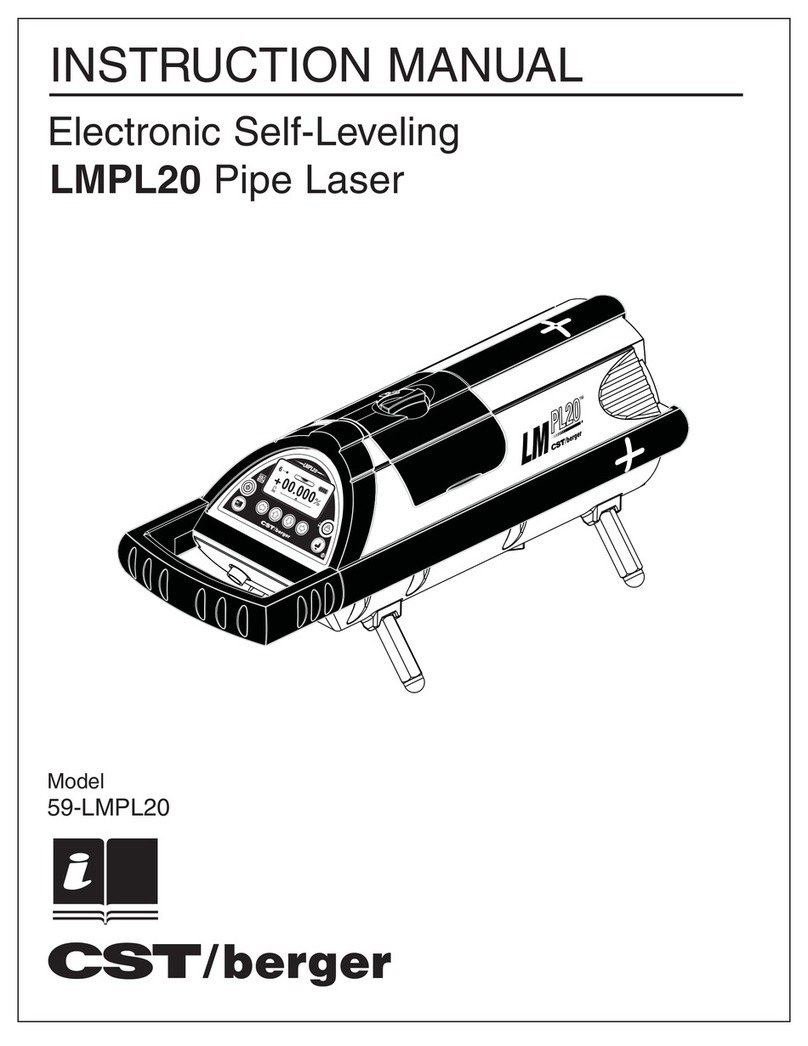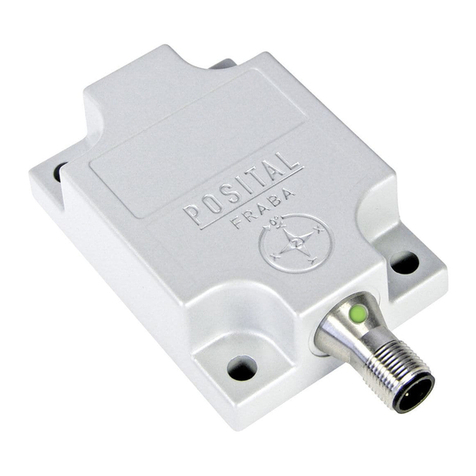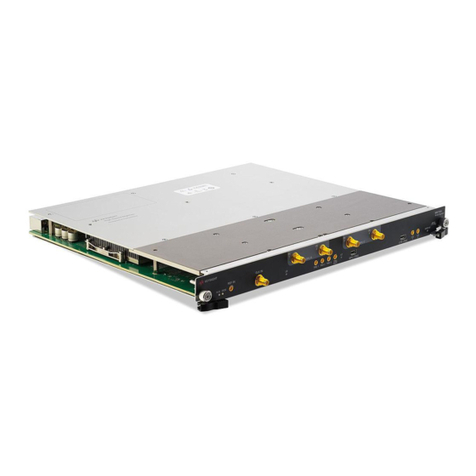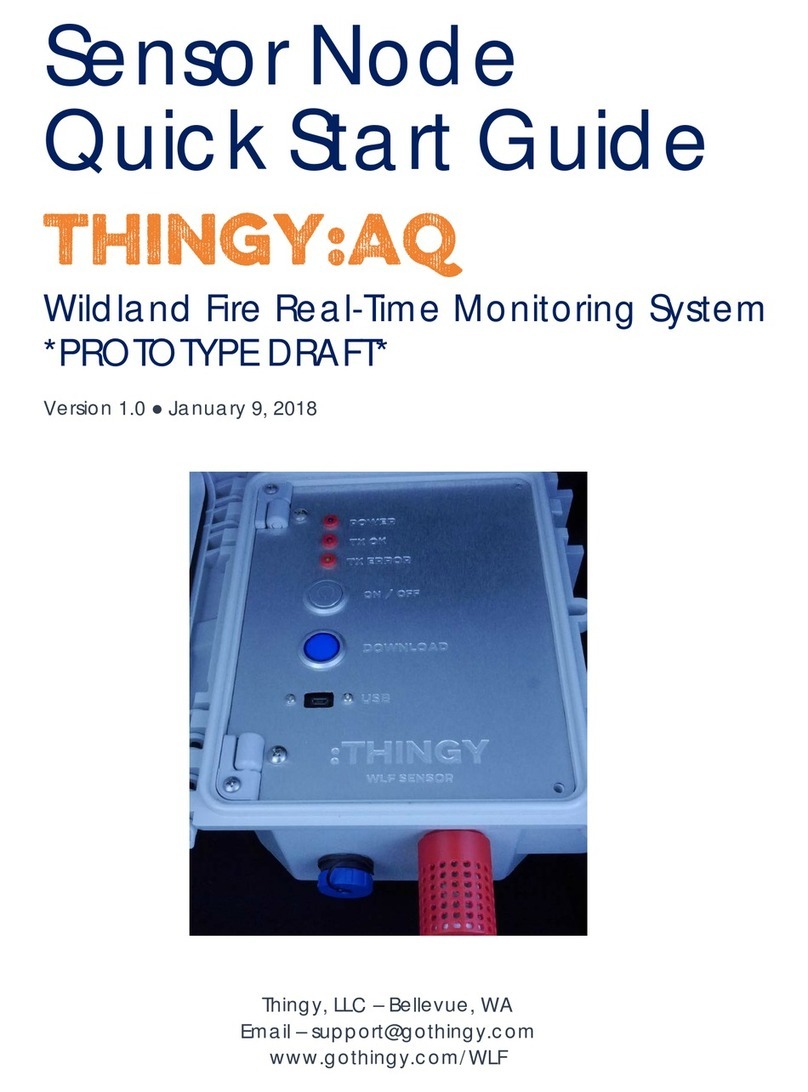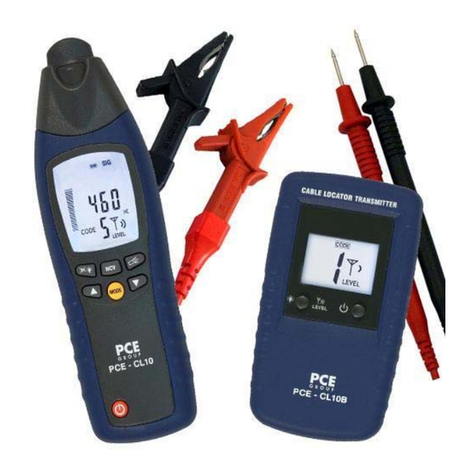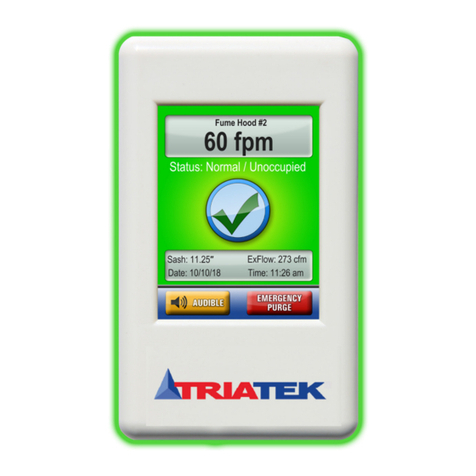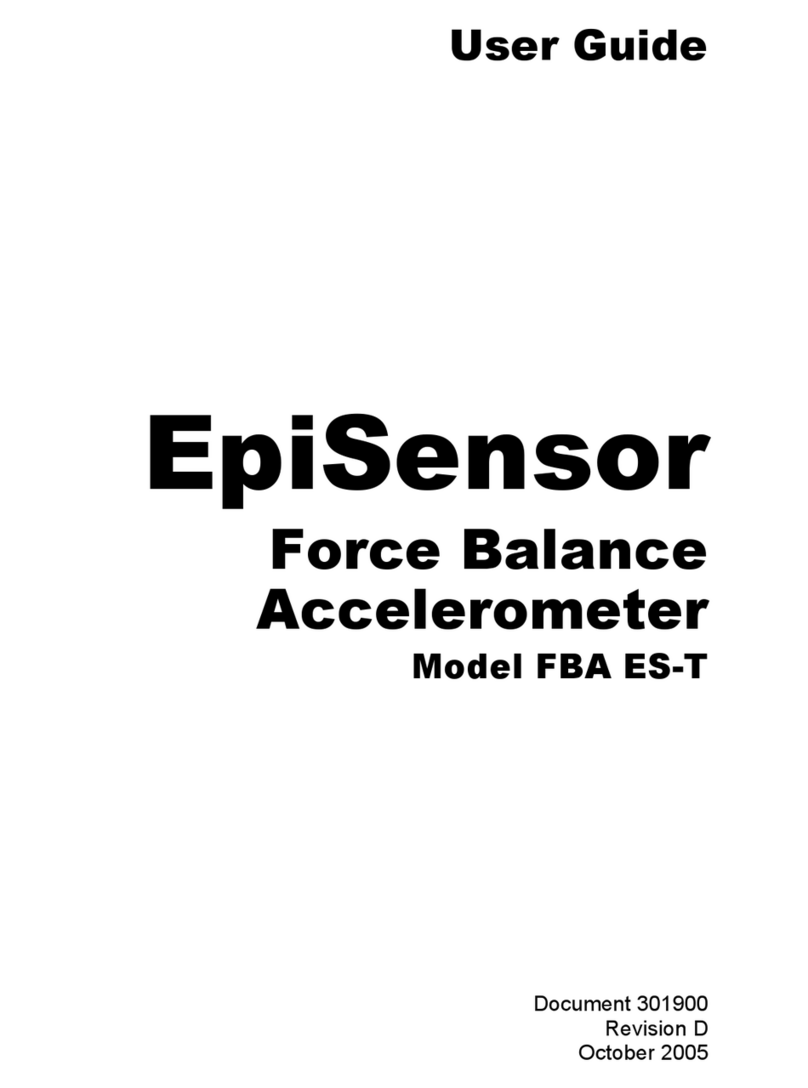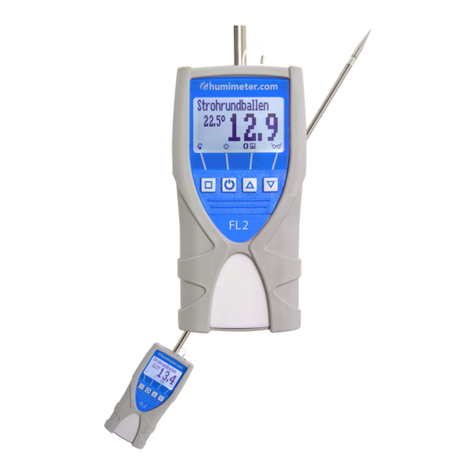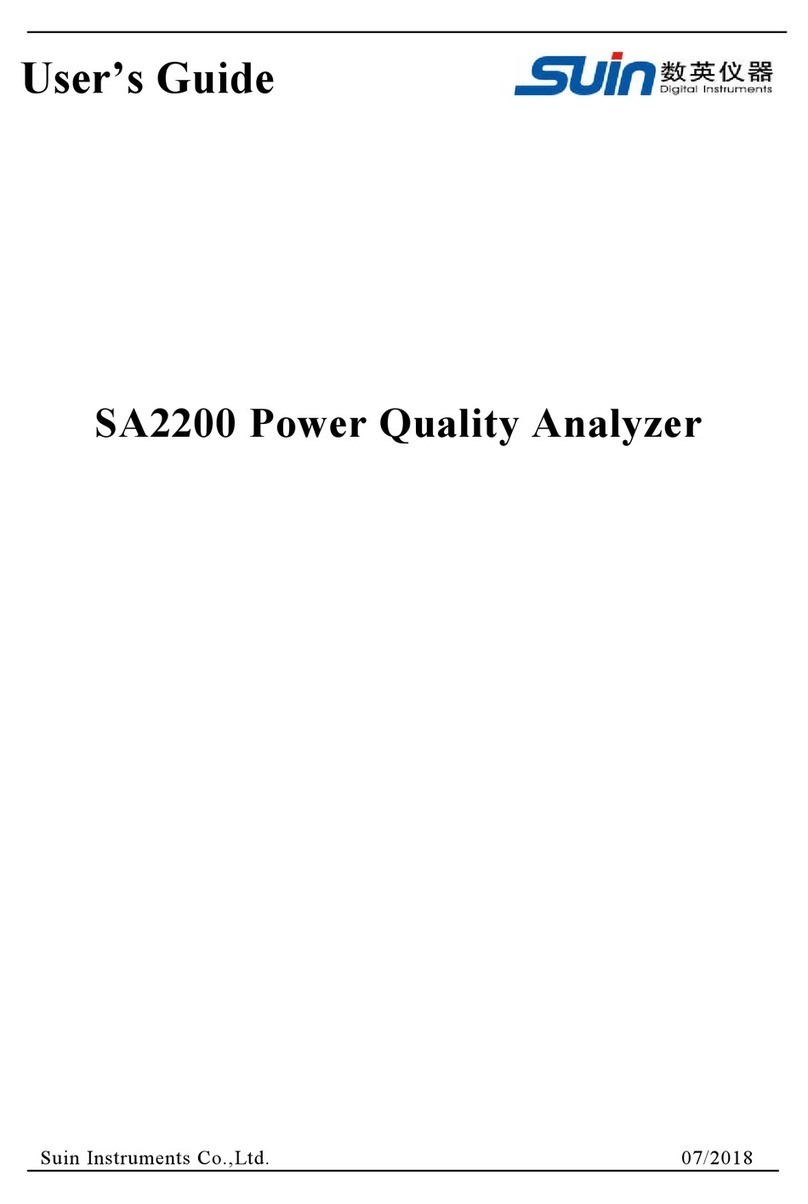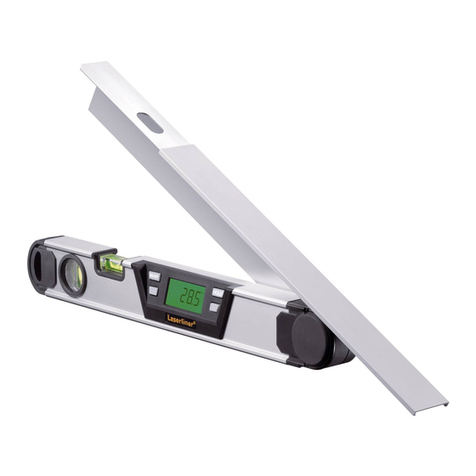CST/BERGER LM30 User manual

Instruction Manual
Manual de Instrucciones
Manuel d’Instructions
Manuale di Istruzioni
Bedienungsanleitung
Instruções de Utilização
Manual Horizontal/
Vertical Rotary Laser
Interior / Exterior
model:
LM30

2 • LM30 Rotary Laser
Copyright © 2010 Robert Bosch Tool Corporation
6
44
5
10
11
12
13
1
2
3
6
7
8
Fig. 1

LM30 Rotary Laser • 3
2
3
4
1
7
6
5
8
Function Buttons
Clock-wise Head Positioning
Counter-lock-wise Head Positioning
Fast
Rotate
Slow
Rotate
Spot
Mode
Long
Sweep
Short
Sweep
CCW CW
RC 100
12345
Clock-wise Head Positioning
Counter-clock-wise Head Positioning
Fast
Rotate
Slow
Rotate
Spot
Mode
Long
Sweep
Short
Sweep
CCW CW
RC30
12345
Rotary Laser Level
Remote Control
1
23
Fig.2
Fig.5
Fig. 3 Fig.4

Thank you for purchasing the LM30 Rotary Laser. Please read this manual thoroughly
before operation.
The information contained herein is proprietary information of Robert Bosch Tool
Corporation, and is subject to change without notice.
Copyright © 2010 Robert Bosch Tool Corporation.
The information contained herein is proprietary information of Robert Bosch Tool Corporation and
is subject to change without notice.
This document shall not be copied or otherwise reproduced without Robert Bosch Tool
Corporation’swritten consent.
SAFE OPERATING PROCEDURES
WARNING: Be sure to read and understand all instructions in this manual before using this
product. Failure to follow all instructions may result in hazardous radiation exposure,
electric shock, fire, and/or bodily injury.
CAUTION: Use of controls or adjustments or performance of procedures other than those
specified in this manual, may result in hazardous radiation exposure.
CAUTION: The use of optical instruments with this product will increase eye hazard.
IMPORTANT: The following labels are on your laser tool for your convenience and safety. They
indicate where the laser light is emitted by the level. ALWAYS BE AWARE of their location when
using the level.
ALWAYS make sure that any bystanders in the vicinity of
use are made aware of the dangers of
looking directly into the laser tool.
DO NOT remove or deface any warning or caution labels.
Removing labels increases the risk of
exposure to laser radiation.
DO NOT stare directly at the laser beam or project the
laser beam directly into the eyes of others. Serious eye
injury could result.
DO NOT place the laser tool in a position that may cause anyone to stare into the laser beam
intentionally or unintentionally. Serious eye injury could result.
DO NOT use any optical tools such as, but not limited to, telescopes or transits to view the laser
beam. Serious eye injury could result.
ALWAYS remove the batteries when cleaning the laser light aperture or laser lens.
DO NOT operate the laser tool around children or allow children to operate the laser tool. Serious
eye injury could result.
4 • LM30 Rotary Laser
EN

ALWAYS turn the laser tool "OFF" when not in use. Leaving the laser tool "ON" increases the risk of
someone inadvertently staring into the laser beam.
DO NOT operate the laser tool in combustible areas such as in the presence of flammable liquids,
gases or dust.
ALWAYS position the laser tool securely. Damage to the laser tool and/or serious injury to the user
could result if the laser tool falls.
ALWAYS use only the accessories that are recommended by the manufacturer of your laser tool.
Use of accessories that have been designed for use with other laser tools could result in
serious injury.
DO NOT use this laser tool for any purpose other than those outlined in this manual. This could
result in serious injury.
DO NOT leave laser tool "ON" unattended in any operating mode.
ALWAYS repair and servicing must be performed by a qualified repair facility. Repairs performed
by unqualified personnel could result in serious injury.
DO NOT disassemble the laser tool. There are no user serviceable parts inside. Disassembling the
laser will void all warranties on the product. Do not modify the product in any way. Modifying the
laser tool may result in hazardous laser radiation exposure.
ELECTRICAL SAFETY PROCEDURES
WARNING: Batteries can explode or leak, and can cause injury or fire. To reduce this risk:
ALWAYS follow all instructions and warnings on the battery label and package.
DO NOT short any battery terminals.
DO NOT charge alkaline batteries.
DO NOT mix old and new batteries. Replace all of them at the same time with new
batteries of the same brand and type.
DO NOT mix battery chemistries.
DISPOSE of batteries per local code.
DO NOT dispose of batteries in fire.
KEEP batteries out of reach of children.
REMOVE batteries if the device will not be used for several months.
LM30 Rotary Laser • 5

FEATURES (Fig. 1)
1. Laser Emitting Window (Plumb Beam) 2. Rotary Head
3. “Y” Level Vial 4. “X” Level Vial
5. “Y” Leveling Screw & Plumb Vial Leveling Screw 6. “X” Leveling Screw
7. Plumb Vial 8. Control Button
9. Laser Emitting Window (Level Beam) 10. Trivet
11. Battery Door Screw 12. Battery Door
13. Base with two 5/8” - 11 Mounting Thread
CONTROL BUTTON OPERATION (Fig.2)
1. POWER/CONTROL BUTTON - LEDs indicate operation mode.
2. PRESS CONTROL BUTTON ONE TIME to turn unit on; rotation begins in
“FAST” Speed (approx. 600 RPM).
3. PRESS TWO TIMES for “SLOW” Speed (approx. 150 RPM).
4. PRESS THREE TIMES to “STOP” rotary head (laser remains lit).
5. Press FOUR TIMES to use Long Sweep.
6. Press FIVE TIMES to use Short Sweep.
7. Low Battery Indication Light.
8. Remote Control Window.
9. PRESS CONTROL BUTTON SIX TIMES to turn unit off (no LED’s remain lit and the
laser is OFF).
CERTIFICATIONS
This laser complies with all applicable portions of title 21 of the Code of Federal
Regulations set by the Dept. of Health, Education, and Welfare, the Food and Drug
Administration, the Center for Devices, and the Bureau of Radiological Health. Complies
with 21CFR 1040.10 and 10040.11 except for devations pursuant to Laser notice No. 50, dated June
24, 2007
The LM30 has also been tested and complies with the CE certification requirements set forth in the
EC regulations 89/336/EEC and EN 61000-6-1 (EN50082-1), EN 61000-6-3 (EN50081-1)
and IEC 60-825-1.
6 • LM30 Rotary Laser

OPERATION
Basic Leveling
As with any level referencing instrument, checking calibration before each use is recommended.
1. Set the instrument on any smooth surface, or mount to a 5⁄8" x 11 tripod and adjust to desired
height.
2. Use the leveling screws and level vials to level the instrument. Each leveling screw controls
the vial opposite the screw (the front leveling screw controls the “Y” axis, and the side
leveling screw controls the “X” axis).
NOTE: The more accurately the vial bubbles are centered, the more accurate the laser beam will
be for referencing level.
3. Turn power on and press the control button once for “FAST” speed (ideal for use outdoors
with a laser detector), or twice for “SLOW” speed (ideal for indoor use). You have created a
highly visible, level reference line (Fig. 3).
Plumbing
1. On a flat surface, place the instrument on its back using the built-in trivet (control button
facing upward).
2. Level the instrument by viewing the plumb vial and turning the front leveling screw until the
plumb vial bubble is centered (Fig. 4).
3. Turn power on and press the control button until you reach your desired speed. You have
created a highly visible, plumb reference line!
Stopping the Rotary Head
It is possible to stop rotation of the head in order to manually direct the laser dot towards a target,
much like a straight-line laser.
1. Turn the unit on by pressing the control button.
2. Press two more times until the “STOP” LED is lit. The rotary head will stop turning.
3. Align the laser beam to your target by turning the rotary head manually.
Sweep Modes (Point & Shoot Scanning)
The LM30’s Sweep Modes create an easily visible laser “chalk line” that you can direct by
manually turning the rotary head.
This is especially useful on job sites where you must contain the laser’s location to avoid
interference with other laser users or laser detectors on site. Also, this feature is very useful for
extending the range of the visible beam.
LM30 Rotary Laser • 7

You may use this feature in either a level or plumb position.
1. Turn the unit on by pressing the control button.
2. Press three more times until the “LONG SWEEP” LED is lit. The rotary ad will quickly scan
back and forth to create a laser “chalk line”.
3. To direct the sweep toward your target, grab the rotary head to stop its movement, and wait
for rotation pressure to relax (normally within a few seconds).
Rotate head to your desired position and release.
4. Length of the chalk line will vary depending on the distance of the LM30 from your working
surface; the angle of the long sweep is approximately 45°. To create a shorter, faster sweep,
press the control button once more (”SHORT SWEEP“ LED will light); the angle of the short
sweep is approximately 22°.
Note: The Sweep Function of this unit is intended for indoor use only. Use of the LM30 in direct
sunlight may result in erratic operation of the Sweep Function.
Use of the LM30 in direct sunlight will not affect any other functions.
Remote Control RC30 - (Fig. 5)
Note: Remote control is included with LM30 Interier packages.
The remote controls Fast Rotation Speed, Slow Rotation Speed, Spot Mode, Long Sweep, Short
Sweep, and can be used up to a maximum of 100 feet (30 m) away from the unit. The user must
face the control panel for proper operation of the remote. Requires 2 AA Alkaline batteries.
1. Operates same as the single button on unit.
2. Rotate laser beacon counter-clock-wise when in sweep or spot mode.
3. Rotate laser head clock-wise when in sweep or spot mode.
APPLICATIONS (Fig.6)
Installing drop ceiling and grid and tiles. Use with Wall/Ceiling Mount
INDOOR LEVELING/PLUMBING: Window Frames, Cabinets & Shelves, Doors & Windows, Erecting
Walls & Partitions, Aligning 90° Joints & Edges, Floors, Tile Work.
OUTDOOR LEVELING/PLUMBING: Porches & Decks, Fencing, Flagpoles, Batterboards,
Landscaping.
8 • LM30 Rotary Laser

POWER
NiCad or Nimh rechargeable batteries do NOT work well in a Laser Level as their operating voltage
is too low. We recommend that only alkaline batteries be used in your Laser Level. Plain carbon
batteries can leak either fluid or corrosive gas, both of which can damage the Laser Level.
It should be noted that the electronic switch in the Laser. Your LM30 will provide approximately 60
hours of intermittent use.
The “Low Battery” LED will light when the batteries’ voltage falls below an optimal level. Also, if
your LM30 fails to emit laser beams, but still has
functioning LEDs and rotation, your batteries may be low; try replacing the batteries before
contacting a service center.
Replacement batteries must be all new batteries; alkalines provide the best performance.
Replace the batteries as follows:
1. Remove the battery cover by turning the battery cover screw counterclockwise.
2. Remove the old batteries and replace with four new “C” cell batteries as illustrated (Fig. 7),
and replace the battery cover.
NOTE: Do not mix old and new batteries. Replace all batteries at the same time with new batteries.
Remove batteries before storage of the instrument
.
CALIBRATION
All Laser Levels are calibrated during assembly and Q.A., howeverLaserLevel owners should
always check the calibration of the unit before use as the settings may have changed with time or
during transportation. It is also wise to recheck the calibration of the Laser Level at regular
intervals and also prior to any critical measurements being performed. A 0.059"(1.5mm) Allen key
will be required to adjust the screws on the two leveling vials, and a 5/64” (2mm) one to adjust the
LD vial.
Checking Horizontal Rotation Error
1. Mount and level the LM30 on a tripod and place approximately 50 feet (15m) away from a
wall. Face the front (control button) to the wall (Fig.8).
2. Turn power on and place the unit in “STOP” mode.
3. Manually rotate the laser beam onto the wall and mark as point A.
4. Loosen the LM30 from the tripod and rotate the instrument 180° so that the back (battery
side) now faces the wall.
Secure and re-level the instrument.
5. Again rotate the laser beam onto the wall and mark its position as point B. No adjustment is
necessary if the vertical difference between points A and B is 1⁄8 inch (3mm) or less.
Otherwise, adjust as follows.
LM30 Rotary Laser • 9

Correcting Horizontal Rotation Error
1. Adjust the “Y” leveling screw until the laser beam rests midway between A and B (Fig. 8).
This will cause the “Y” vial bubble to shift from center. Clockwise rotation will raise the
beam; counterclockwise rotation will lower the beam.
2. Center the “Y” vial bubble by adjusting the vial leveling screws with a 1.5mm hex key.
3. Recheck the accuracy of horizontal rotation by repeating steps 1-5 in section”Checking
Horizontal Rotation Error”. Readjust as necessary.Repeat the above checking and adjusting
procedures using the left and right sides of instrument, adjusting the “X” leveling screw and
“X” vial as necessary.
Checking Vertical Rotation Error
1. Set the instrument on its trivet (control button upward) on a floor approximately 100 feet
(30m) from the base of a wall. The right side of the instrument should face the wall. Level
the unit by adjusting the “Y” leveling screw.
2. Turn power on and place the unit in “STOP” mode.
3. Mark a control point “A” on the wall (Fig. 9). Turn the rotary head
manually until the laser beam hits point A on the wall.
4. Turn the rotary head to move the laser beam 30 feet (9m) upward on the wall and mark this
as point B.
5. Turn the instrument 180° and align the beam to point A, re-leveling if necessary (Fig. 10).
6. Turn the rotary head to move the laser beam to the same height as point B, and mark as
point C.
No adjustment is necessary if the difference between points B and C is 1⁄8 inch (3mm) or less.
Otherwise, adjust as follows.
Correcting Vertical Rotation Error
1. Adjust the “Y” leveling screw until the laser beam rests midway between points B and C.
This will cause the plumb vial bubble to shift from center.
2. Center the plumb vial bubble by adjusting the vial leveling screws with a 5/64”(2mm)
hex key.
3. Recheck the accuracy of vertical rotation by repeating steps 1-6 in
section”Checking Vertical Rotation Error”. Readjust as necessary.
10 • LM30 Rotary Laser

SETTING UP
Correct set-up of any manual Laser Level is critical to the operation of the Level. These Laser
Levels do not adjust themselves automatically. The accuracy of the job depends entirely upon how
well the unit has been set-up. An error of only 0.02" (0.5mm) at the top of the tripod becomes an
error of 4" at 65 feet (100 mm at 20 meters). In order to achieve the accuracy required some special
precautions should be observed.
1. The head of the Laser Level is fitted with two engineering grade spirit leveling vials which are
extremely accurate and very sensitive. When the Level is being set-up the bubbles move quite
slowly and may even stick inside the vial. This is called stiction. The solution is to lightly tap the
non-rotating part of the Level with the tip of a finger until the bubble ceases to move.
2. When attaching the Laser Level to the tripod, the instrument fastening screw should not be
over-tightened. If the screw is tightened excessively then the trivet base will become distorted
and over a period of time the plastic material of the trivet will relax, particularly if the day is hot,
causing the setting of the Level to change. In extreme cases it is possible to pull the centre
insert out of the trivet.
MAINTENANCE
Always clean the instrument after use. Use a soft, dry cloth to remove any dirt or moisture from the
instrument. Store the unit in its case when not in use. Batteries should be removed before long-
term storage. Do not use benzene, paint thinner, or other solvents to clean the instrument.
ENVIRONMENT PROTECTION
Recycle raw materials instead of disposing as waste.The machine,
accessories and packaging should be sorted for environmental friendly
recycling. Do not throw used batteries into house waste, fire or water but
dispose of in an environmentally friendly manner according to the
applicable legal regulations.
LM30 Rotary Laser • 11

12 • LM30 Rotary Laser
SPECIFICATIONS
Approximate Rotation Speed: 600 RPM–OUTDOOR; 150 RPM–INDOOR. When
using optional detector, highest RPM mode is
recommended.
Horizontal Accuracy: 1⁄4" at 100 feet (6.4mm at 30m)
Vertical Accuracy: 1⁄4” at 100 feet (6.4 mm at 30m)
Range: Up to 200 feet (60m) diameter interior, up to 800 feet
(240m) diameter exterior with optional laser
detector
Laser Diode: 635nm
Laser Class: 2M
Level & Plumb Vial Sensitivity: Level, 5-8 minutes; plumb, 15 minutes
Mounting Screw: 5⁄8-11 for standard tripods
Weight: 3.6 lbs. (1.6kg) with batteries
Power: Four “C” cell batteries provide approximately 60
hours of intermittent use
Specifications subject to change without notice.
UNIVERSAL LASER DETECTOR
Introduction
The Universal Laser Detector aids in locating and targeting a visible or invisible beam emitted by a
rotary laser; perfect for use in outdoor conditions, where sunlight and distance may make locating
the beam more difficult.
Features (Fig. A)
1. LCD readout window 2. Speaker
3. Beam capture window 4. Power ON/OFF
5. Beam resolution 6. Volume ON/OFF
7. LCD readout window (LD-400 and LD-120 only) 8. Battery door

LM30 Rotary Laser • 13
Operation
1. Turn on the unit by pressing the ON/OFF pad. The LCD symbols will momentarily
flash (Fig. B).
2. Expose the beam capture window of the laser detector towards the direction of the
rotating laser.
3. Slowly move the laser detector in an upward and downward direction until the LCD beam
indicator arrows appear and/or a pulsing audio signal is heard. Select the desired Beam
Resolution, according to the job conditions and the precision required (to see the available
Resolutions, please refer to the Specs Table).
4. Move the detector upward when the low beam indicator light is lit (with volume on, a short
pulsing audio tone is heard). Move the detector downward when the high beam indicator
arrow is lit (with volume on, a long pulsing audio tone is heard). When the beam is level, the
level beam indicator line will be lit and a solid audio tone will be heard.
If the detector is not struck by a laser beam after 5-8 minutes, the detector will automatically shut
itself off to preserve battery life.
Turn the unit back on using the power button.
Special features
The laser detector includes a rod clamp which allows to mount the detector onto square, round or
oval sighting rods.
The detectors are gasket sealed for water and dust protection. Remove any moisture or dirt with a
soft, dry cloth.
Do not use aggressive cleaning agents or solvents. Remove batteries before storage of
the instrument.
The LCD display of the detector LD-400 has seven distinct channels of information, indicating the
position of the detector in the plane of laser light, as indicated in Fig. C (the detectors LD-120 and
LD-100N have three).
As you move the detector closer to the center, the arrows fill in to indicate the laser position.
The detector has a unique memory feature, which preserves the last position of the laser beam if
the detector is moved out of the plane of laser light, as well as built in electronic filtering for bright
sunlight and electromagnetic interference.
The detector LD-400 has three speaker selections (Off, Loud (105dBA) and Louder (125+ dBA)),
whereas the models LD-120 and LD-100N have only two (Off and On).

14 • LM30 Rotary Laser
Description LD-400 LD-120LD-100N
Dimensions 6.6” H x “ W x 1” D (169mm x 76mm x 25mm)
Weight 10 oz. (275g)
Range Up to 800-ft (305m) Radius with LM30
Beam Resolution *
Fine ±0.75mm
Medium ±1.5mm
Wide ±3mm
Medium ±1.5 mm
Wide ±3 mm
Medium ±1.5mm
Wide ±3mm
Readout LCD, 2 windows LCD, 2 windows LCD, 1 window
Power One 9-volt battery provides 3 months of typical usage
Power
A 9-volt battery will provide up to 3 months of typical usage. When the unit is turned on and the
low battery symbol remains lit, the battery should be replaced.
Specifications
Note: Sensitivity values based on standard conditions with most lasers; may vary slightly due to
make, manufacturer, beam size, or working conditions.
Warranty
One Year Warranty. Robert Bosch Tool Corporation ("Seller") warrants to the original
purchaser only, that this laser tool product will be free from defects in material or workmanship for
a period of one (1) year from date of purchase.
SELLER'S SOLE OBLIGATION AND YOUR EXCLUSIVE REMEDY under this Limited Warranty and, to
the extent permitted by law, any warranty or condition implied by law, shall be the repair or
replacement of laser and measuring tool products, which are defective in material or workmanship
and which have not been misused, carelessly handled, or misrepaired by persons other than Seller
or Seller Authorized Service providers.
To make a claim under this Limited Warranty, you must return the complete product, transportation
prepaid. For details, please contact the factory direct service line at 1-815-432-9200.
ANY IMPLIED WARRANTIES SHALL BE LIMITED IN DURATION TO ONE YEAR FROM DATE OF

PURCHASE. SOME STATES IN THE U.S., AND SOME CANADIAN PROVINCES DO NOT ALLOW
LIMITATIONS ON HOW LONG AN IMPLIED WARRANTY LASTS, SO THE ABOVE LIMITATION MAY
NOT APPLY TO YOU.
IN NO EVENT SHALL SELLER BE LIABLE FOR ANY INCIDENTAL OR CONSEQUENTIAL DAMAGES
(INCLUDING BUT NOT LIMITED TO LIABILITY FOR LOSS OF PROFITS) ARISING FROM THE SALE
OR USE OF THIS PRODUCT. SOME STATES IN THE U.S., AND SOME CANADIAN PROVINCES DO
NOT ALLOW THE EXCLUSION OR LIMITATION OF INCIDENTAL OR CONSEQUENTIAL DAMAGES,
SO THE ABOVE LIMITATION MAY NOT APPLY TO YOU.
THIS LIMITED WARRANTY GIVES YOU SPECIFIC LEGAL RIGHTS, AND YOU MAY ALSO HAVE
OTHER RIGHTS WHICH VARY FROM STATE TO STATE IN THE U.S., OR PROVINCE TO PROVINCE IN
CANADA AND FROM COUNTRY TO COUNTRY.
THIS LIMITED WARRANTY APPLIES ONLY TO PRODUCTS SOLD WITHIN THE UNITED STATES OF
AMERICA, CANADA AND THE COMMONWEALTH OF PUERTO RICO. FOR WARRANTY COVERAGE
WITHIN OTHER COUNTRIES, CONTACT YOUR LOCAL BOSCH DEALER OR IMPORTER.
CST/berger is a trademark of Robert Bosch Tool Corporation
LM30 Rotary Laser • 15

16 • LM30 Rotary Laser
Gracias por haber escogido nuestro Laser LM30.
PROCEDIMIENTOS DE OPERACIÓN SEGUROS
ADVERTENCIA: Asegúrese de leer y comprender todas la instrucciones en este manual
antes de usar este producto. El no seguir todas las instrucciones podrá resultar en
exposición de radiación peligrosa, electrocución, incendio y/o heridas corporales.
PRECAUCIÓN: El uso de controles, ajustes, o la ejecución de procedimientos diferentes a
aquellos especificados en este manual podrán resultar en la exposición a radiación
peligrosa.
PRECAUCIÓN: El uso de instrumentos ópticos con este producto le aumentará el peligro a
los ojos.
IMPORTANTE: Las siguientes etiquetas se encuentran en su herramienta láser para su
conveniencia y seguridad. Ellas indican por donde es emitido por el nivel el haz de láser.
SIEMPRE ESTÉ ALERTA: de su ubicación cuando use
el nivel.
SIEMPRE: asegúrese de que cualquier espectador en la
vecindad de uso sea alertado de los peligros de mirar
directamente dentro de la herramienta láser.
NO REMUEVA: o mutile ninguna etiqueta de advertencia
o de precaución. El remover las etiquetas aumenta el
riesgo de exposición a la radiación del láser.
NO: se quede mirando ni proyecte el haz láser
directamente a los ojos de los demás. Podrá dar como
resultado heridas serias en los ojos.
NO: coloque la herramienta láser en una posición que pueda causar que alguien mire el haz láser
intencionalmente o de manera no intencionada. Podrá dar como resultado heridas serias en
los ojos.
NO: USE herramientas ópticas tales como, pero sin limitarse a, telescopios o teodolitos para ver el
haz de láser. Podrá dar como resultado heridas serias en los ojos.
SIEMPRE: retire las baterías cuando limpie la abertura del haz láser o el lente láser.
NO OPERE: la herramienta láser alrededor de los niños ni permita que los niños la operen. Podrá
dar como resultado heridas serias en los ojos.
SIEMPRE: apague la herramienta láser cuando no esté siendo usada. El dejar la herramienta láser
prendida aumentará el riesgo de que alguien mire inadvertidamente el haz láser.
NO OPERE: la herramienta láser en ambientes explosivos, tales como en presencia de líquidos
inflamables, gases, o polvo.
SIEMPRE: coloque firmemente la herramienta láser. Si la herramienta láser se cae se podrá dañar
y/o resultar en heridas serias al usuario.
SIEMPRE: use únicamente los accesorios recomendados por el fabricante de su herramienta láser.
El uso de accesorios que fueron diseñados para uso con otras herramientas láser podrán causar
heridas serias.
NO USE :esta herramienta láser para ningún otro propósito que no haya sido descrito en este
manual. Esto podrá dar como resultado heridas serias.
NO DEJE: la herramienta prendida y desatendida en ninguna modalidad de operación.
E

La reparación y el servicio SIEMPRE deberán ser efectuados por un centro de reparación
calificado. Las reparaciones efectuadas por personal no calificado podrán dar como resultado
heridas serias.
NO: desarme la herramienta láser. No hay piezas dentro que sean reparables por el usuario. El
desarmar el láser anulará todas las garantías del producto. No modifique el producto de ninguna
manera. El modificar la herramienta láser podrá resultar en exposición peligrosa a la radiación.
PROCEDIMIENTOS DE SEGURIDAD ELÉCTRICOS
ADVERTENCIA: Las baterías pueden explotar o tener fugas y así causar heridas o un
incendio. Para reducir este riesgo:
SIEMPRE: siga todas las instrucciones y advertencias de la etiqueta y del empaque de la batería.
NO: ponga en corto los terminales de la batería.
NO: cargue las baterías alcalinas.
NO: mezcle las baterías viejas con las nuevas. Reemplácelas todas al mismo tiempo por baterías
nuevas de la misma marca y tipo.
NO: mezcle la química de las baterías.
DESHÁGASE: de las baterías de acuerdo con el código local.
No: incinere las baterías.
MANTENGA: las baterías fuera del alcance de los niños.
REMUEVA: las baterías si el dispositivo no será usado durante varios meses.
CARACTERISTICAS (Fig. 1)
1 Rayo laser vertical (plomada) 2 Cabeza rotatoria
3. Burbuja horizontal eje “Y” 4 Burbuja horizontal eje “X”
5 Tornillo nivelación eje “Y” y plomada (vertical) 6 Tornillo nivelación eje “X”
7 Burbuja vertical 8 Botón de control
9 Rayo laser horizontal (nivelación) 10 Soporte
11 Tornillo de la tapa 12 Tapa de las pilas
13 Soporte base con dos roscas 5/8” - 11
FUNCIONAMIENTO DEL BOTÓN DE CONTROL (Fig. 2)
1. BOTÓN DE CONTROL – los LEDs indican la función seleccionada
2. Presionar UNA VEZ para encender la unidad; la rotación comienza en velocidad de
“EXTERIOR” (aprox. 600 RPM)
3. Presionar DOS VECES para seleccionar la velocidad de “INTERIOR” (aprox. 150 RPM)
4. Presionar TRES VECES para parar la cabeza rotatoria (el láser permanece encendido)
LM30 Rotary Laser • 17

5. Presionar CUATRO VECES para seleccionar el “barrido largo”
6. Presionar CINCO VECES para seleccionar el “barrido corto”
7. Indicación de carga de las pilas
8. Ventana de recepción del mando a distancia
Presionar SEIS VECES para apagar la unidad (ningún LED permanece encendido)
CERTIFICACIONES
Este láser cumple con todas las porciones del título 21 del Código de Regulaciones Federales que
le aplican determinadas por el departamento de Salud, Educación, Bienestar, la Administración de
Alimentos y Drogas, el Centro de Dispositivos y la Agencia de Salud Radiológica.
El LM30 también ha pasado las pruebas y cumple con los requisitos para la obtención de la
certificación CE publicados en la Directiva 89/336/EEC y EN 61000-6-1 (EN50082-1), EN 61000-6-3
(EN50081-1) e IEC 60-825-1.
Copyright© 2010 Robert Bosch Tool Corporation
Toda esta información es propiedad de Robert Bosch Tool Corporation.
Este documento no debe ser copiado o reproducido sin el consentimiento escrito de Robert Bosch
Tool Corporation.
FUNCIONAMIENTO
Nivelación
Como para cualquier instrumento de nivelación, se aconseja controlar la calibración del
instrumento antes del trabajo (ver capítulo “CALIBRACIÓN”).
1. Colocar el LM30 sobre cualquier superficie lisa o montarlo en un trípode estándar con rosca
de 5/8” - 11.
2. Utilizar los tornillos de ajuste y las burbujas de nivelación para nivelar el instrumento. Cada
tornillo de nivelación controla la burbuja opuesta al tornillo (el tornillo nivelador frontal
controla el eje “Y”, y el tornillo nivelador lateral controla el eje “X”).
Nota: Cuanto más exactamente centradas estén las burbujas, más precisa será la señal del láser
para el nivel de referencia. Asegurar que las burbujas están estables.
3. Encender el láser y presionar una vez el botón de control para conseguir la velocidad “alta”
(ideal para trabajar en el exterior con un receptor láser), o dos veces para conseguir la
velocidad “baja” (ideal para trabajar en el interior). De esta forma se ha obtenido una línea
de referencia a nivel muy visible (Fig. 3).
18 • LM30 Rotary Laser

Plomada
1. Sobre una superficie plana, colocar el láser sobre la parte posterior utilizando el soporte
(botón de control hacia arriba).
2. Nivelar el instrumento controlando la burbuja de la cara superior mediante el tornillo
nivelador “Y” (superior) hasta que la burbuja esté centrada (Fig. 4).
3. Encender la unidad y presionar el butón de control hasta que se alcance la velocidad
deseada. De esta forma se ha obtenido una línea de referencia vertical a nivel muy visible.
Parada de la cabeza rotatoria
Es possible interrumpir la rotación de la cabeza para dirigir manualmente la señal del láser hacia
el objetivo deseado, como en un nivel láser de línea.
1. Encender el láser presionando el botón de control.
2. Presionar dos veces más hasta que la señal “STOP” esté encendida. La cabeza rotatoria
dejará de girar.
3. Alinear la señal de láser hacia su objetivo girando la cabeza
manualmente.
Funcionamiento del modo “barrido”
El modo “barrido” del láser LM30 crea una línea láser muy visible, que puede ser dirigida girando
manualmente la cabeza rotatoria. Esto es
particularmente útil cuando hay que delimitar el área del rayo láser para
evitar interferencias con otros láser o receptores en la obra. Además con esta función se aumenta
de una manera considerable la visibilidad del rayo láser. Se puede utilizar esta función en
horizontal y en vertical.
1. Encender el láser presionando el botón de control.
2. Presionar tres veces más hasta que la señal “barrido largo” esté encendida. La cabeza
rotatoria empezará a girar hacia un lado y hacia el otro para crear una línea de “barrido”.
3. Para dirigir el barrido hacia su objetivo, coger la cabeza rotatoria con suavidad para parar la
rotación y esperar que el motor baje su fuerza (normalmente unos segundos). Girar la
cabeza hacia el objetivo
deseado y soltarla. Esta operación debe hacerse con mucha suavidad para no dañar la
cabeza giratoria.
4. La longitud del barrido varia según la distancia entre el láser y su
objetivo; el ángulo del barrido largo es de aprox. 45°. Para crear un
barrido más corto y más veloz, presionar otra vez el botón de control (la señal de “barrido
corto” está encendida); el ángulo del barrido corto es de aprox. 22°.
LM30 Rotary Laser • 19

Nota: La función de barrido solo es fiable en interior, ya que en exterior debido a la luz directa del
sol puede distorsionar la señal en barrido. El resto de las funciones, rotación y punto, no son
afectadas por la luz del sol.
Mando a distancia RC30 (Fig. 5)
El mando controla las funciones: Rotación Veloz, Rotación Lenta, Punto Fijo, Barrido Largo, y
Barrido Corto .
Puede ser utilizado hasta 30 metros de distancia, en dirección de la cara frontal del láser y
necesita 2 pilas alcalinas tipo “AA”.
1. Funciona como el botón de control del láser
2. Gira el punto fijo y el barrido en sentido contrario a las agujas del reloj
3. Gira el punto fijo y el barrido en el sentido de las agujas del reloj
APLICACIONES (Fig. 6)
Con el SOPORTE DE PARED/TRIPODE: montaje de falsos techos y de azulejos.
NIVELACIONES Y PLOMADAS EN INTERIORES: Marcos de ventanas,
armarios y estanterías, puertas y ventanas, construcción de paredes y tabiques, trazado de
perpendiculares, instalación de suelos, baldosas.
NIVELACIONES Y PLOMADAS EN EXTERIORES: Porches, cubiertas, cercados, postes.
ALIMENTACIÓN
El laser LM30 proporciona aprox. 60 horas de uso intermitente con cuatro pilas alcalinas de alta
calidad. En caso que se quiera utilizar pilas recargables, considerar que la vida media de las pilas
disminuye aprox. el 20%, pero por otro lado se aprovecha la re-utilización de las pilas. El LED de
“Pilas descargadas” se enciende cuando el voltaje de las pilas es bajo. Atención: pilas de carbón
pueden gotear liquido o gas corrosivo y pueden dañar el nivel láser.
Si Su láser no emite rayo, pero los LEDs están encendidos y la cabeza gira, las pilas podrían estar
casi descargadas; cambiar las pilas antes de contactar el servicio técnico. Sustituir todas las pilas
al mismo tiempo por pilas nuevas.
1. Quitar la tapa de las pilas girando el tornillo en sentido contrario a las agujas del reloj.
2. Quitar las pilas usadas y colocar cuatro pilas nuevas 1,5 V “C”, como se ilustra en la Fig. 7;
luego colocar la tapa de las pilas.
Nota: No mezclar pilas usadas y nuevas. Sustituir todas las pilas al mismo tiempo por pilas nuevas.
20 • LM30 Rotary Laser
Table of contents
Languages:
Other CST/BERGER Measuring Instrument manuals

CST/BERGER
CST/BERGER iLMXT User manual

CST/BERGER
CST/BERGER RL25H User manual
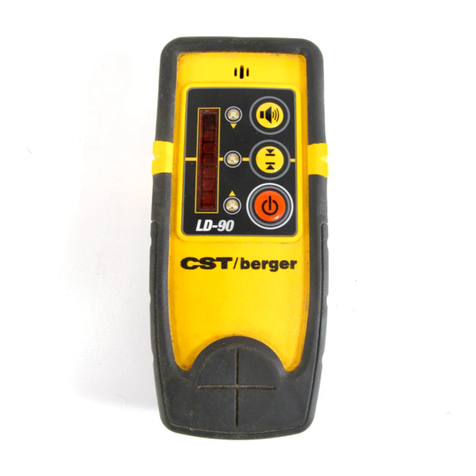
CST/BERGER
CST/BERGER LD90 User manual
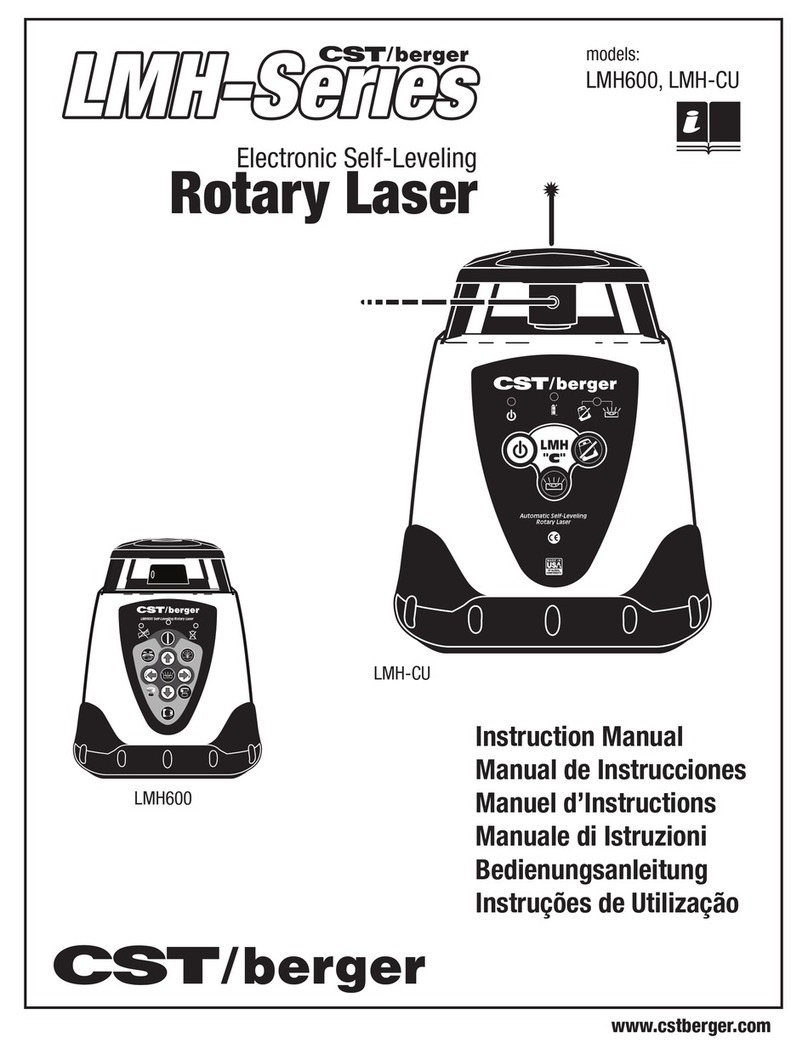
CST/BERGER
CST/BERGER LMH600 User manual
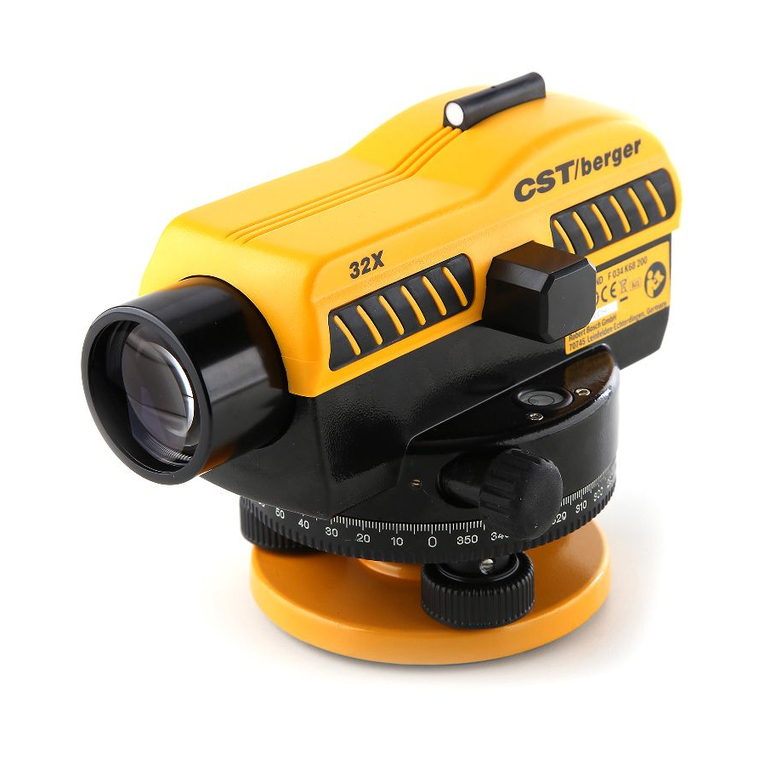
CST/BERGER
CST/BERGER PAL/SAL N Series User manual

CST/BERGER
CST/BERGER Lasermark LD500 User manual
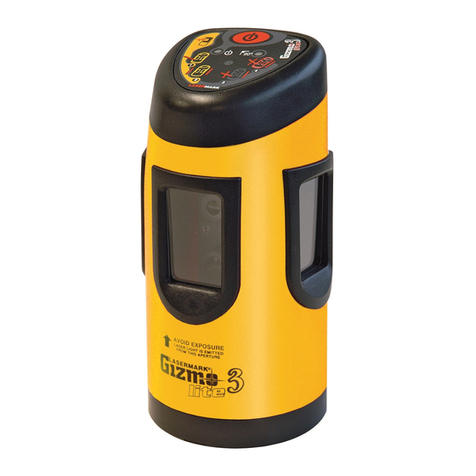
CST/BERGER
CST/BERGER LASERMARK GIZLT-3 User manual
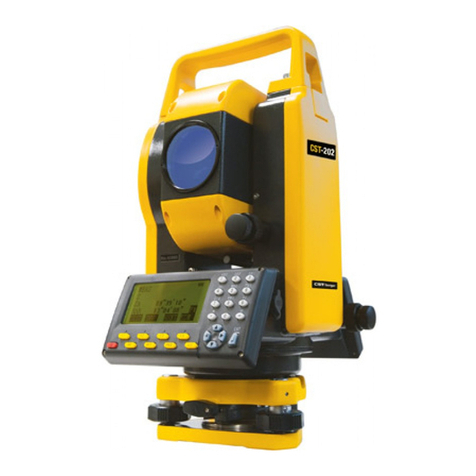
CST/BERGER
CST/BERGER CST202 User manual
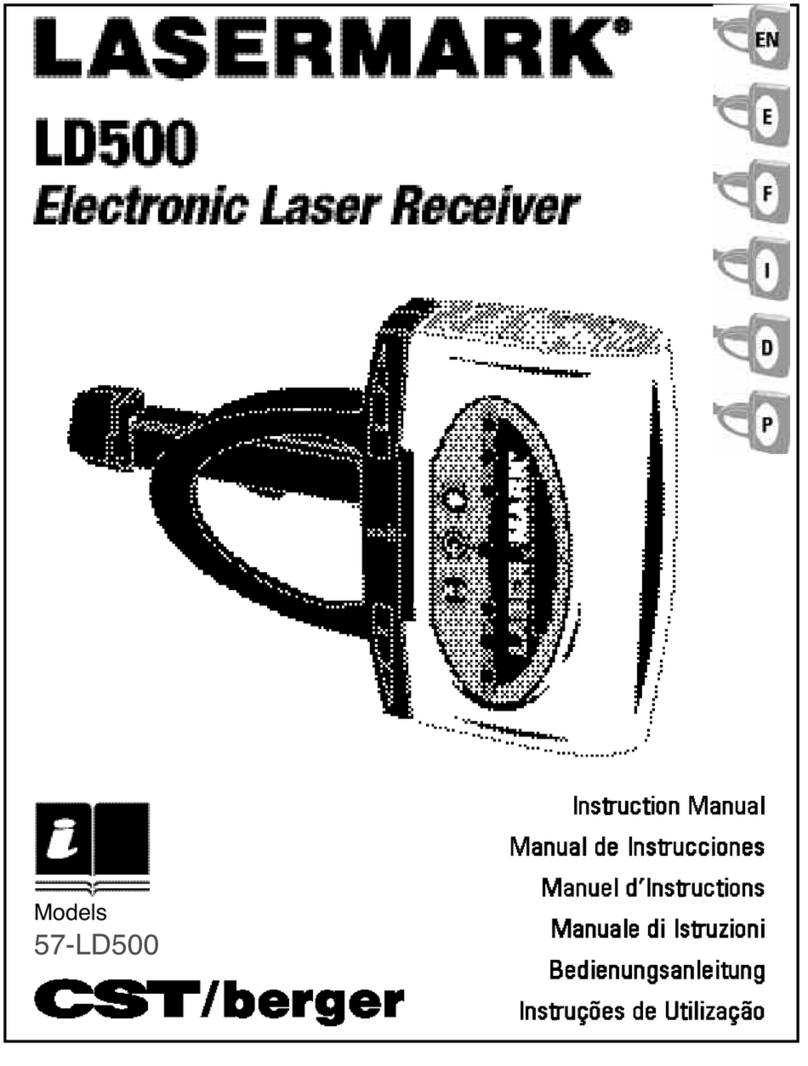
CST/BERGER
CST/BERGER Lasermark LD500 User manual
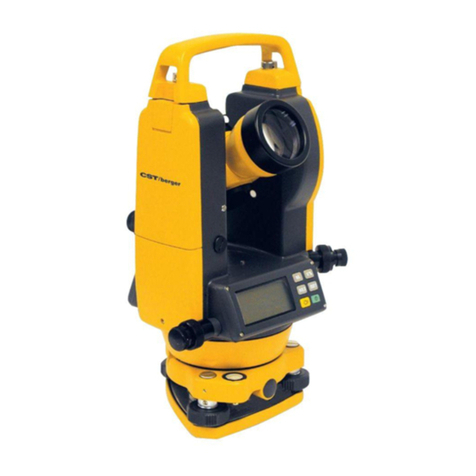
CST/BERGER
CST/BERGER 56-DGT2 User manual
